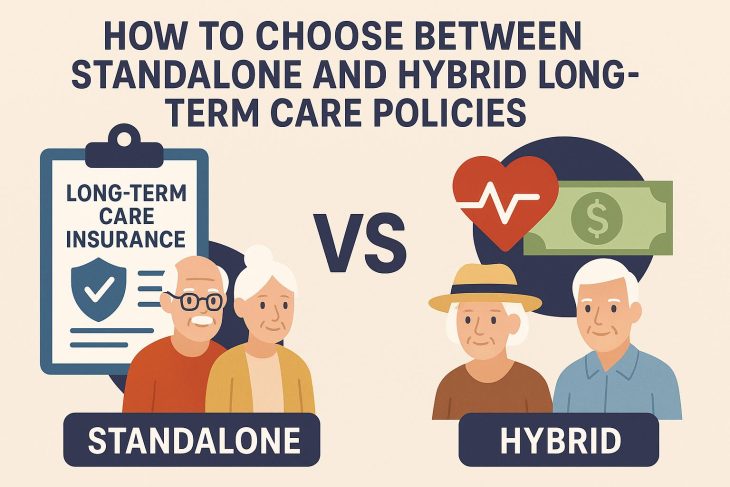
Understanding Long-Term Care Insurance Options
Long-term care insurance plays a pivotal role in securing one’s financial future, especially when it comes to managing expenses associated with extended healthcare services. Typically, such costs are not covered by standard health insurance plans, Medicare, or Medicaid. Understanding the nuances of long-term care insurance can help individuals make informed decisions and select policies that best align with their personal and financial needs. There are two primary options in long-term care insurance: standalone long-term care policies and hybrid long-term care policies. Each type of policy offers distinct advantages and considerations tailored to individual circumstances.
Standalone Long-Term Care Policies
Standalone long-term care policies are crafted explicitly with the aim of addressing expenses related to long-term care. These policies often present a broad range of options, enabling policyholders to choose from an array of care facilities and services.
Benefits of Standalone Policies
These policies are marked by a high degree of specialization. They are specifically targeted toward long-term care, which often results in more personalized coverage options. Furthermore, standalone policies offer flexibility, allowing individuals to choose among various care settings such as in-home care, assisted living, or nursing home facilities. This flexibility is highly beneficial as it ensures care preferences are met in a manner that aligns closely with the policyholder’s requirements and expectations.
Limitations of Standalone Policies
Despite their benefits, standalone policies also come with potential downsides. One significant consideration is the risk of premium increases over time. Such increases can become financially burdensome, especially for those on a fixed income. In addition, standalone policies often operate under a use-it-or-lose-it principle. If the insured individual never requires long-term care, the premiums paid over the years do not provide any return, as benefits are not disbursed without care needs.
Hybrid Long-Term Care Policies
Hybrid policies integrate life insurance with long-term care benefits, offering a dual-function model. This type of policy provides a death benefit alongside coverage for long-term care, thereby offering more versatility than traditional standalone policies.
Benefits of Hybrid Policies
The primary advantage of hybrid policies is their dual purpose. By offering both life insurance and long-term care benefits, these policies ensure that policyholders receive some value, even if long-term care services are never utilized. Another point of interest is that these policies usually come with no rate increases. Fixed premiums safeguard against unexpected future rate hikes, enabling more predictable financial planning over the life of the policy.
Limitations of Hybrid Policies
While hybrid policies provide several benefits, they also come with certain limitations. One major concern is the possibility of a higher initial cost. The incorporation of life insurance components often results in higher premiums compared to standalone policies. Additionally, hybrid policies may offer less coverage specifically for long-term care, potentially making them less comprehensive in this regard when compared to standalone options.
Factors to Consider When Choosing Between the Two
Choosing the appropriate long-term care insurance policy requires thorough consideration of several key factors:
Financial Goals and Budget: Assessing what one can afford is crucial. Consider what financial outcomes you hope to achieve. This might include goals such as preserving personal wealth or ensuring a financial legacy for heirs.
Health Status: Current health conditions play a vital role in determining eligibility and attractiveness of a specific type of policy over another. Consider how your health may impact your future care needs and choose a policy that aligns with these expectations.
Family Considerations: Take into account family history and familial responsibilities. Consider whether the policy is expected to provide financial support to family members in case of an untimely need for long-term care or other unforeseen circumstances.
Ultimately, selecting the right long-term care policy involves a deep understanding of your financial standing, health prospects, and individual objectives. Engaging with a financial advisor can offer invaluable personalized guidance, helping you to make choices that are well-suited to your unique situation. For those looking to explore various policy providers in-depth, visiting the websites of reputable insurance companies can provide additional insights and detailed information on currently available plans. Such research can be instrumental in making well-informed decisions to ensure a secure financial future, irrespective of healthcare needs that may arise.
This article was last updated on: October 30, 2025
